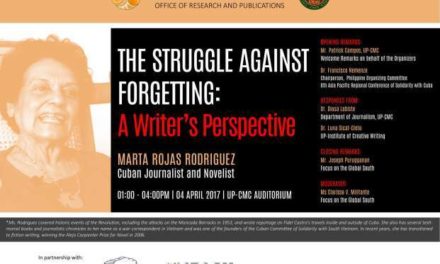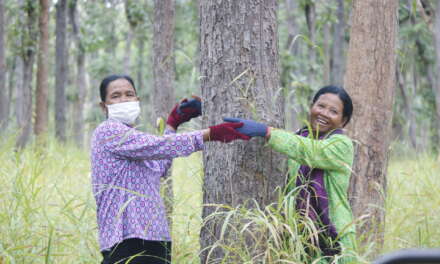This article first appeared in “Frontline”, Issue no: March 11, 2005.
Already some aspects of the post-tsunami relief measures in some of the worst affected areas like Aceh in Indonesia are adding to the continuing nightmare of local residents.
The ability of international elites to turn every situation, no matter how tragic or desperate, to their own advantage, is of course legendary. Nevertheless, it still manages to shock and surprise when man-made or natural disasters quickly become arenas for reaping superprofits for international business, and are used to penetrate markets when they are particularly weakened.The newest name of the game is of course “reconstruction”, that useful all-encompassing term that covers the gold rush of private investors, international consultants and businesses that is now standard in countries and regions affected by civil war, military occupation (imperialist or otherwise) and natural calamities. It is not only a question of the profits that are to be made through increased expenditures required for rebuilding broken infrastructure, or through prising open new markets when domestic production systems have collapsed. The best thing about such reconstruction is that it can bathe such profit-making in a hallowed glow of virtue, and be portrayed as an example of the nobility and generosity of those involved.
Typically, genuine aid – that is untied grants that go directly to helping the people affected – form a small and even minuscule part of the billions that are usually projected as “aid”. Most of the money comes in the form of loans or tied grants, or sometimes aid in kind (such as food) that does no more than get rid of surpluses in sending countries. Sometimes, even such aid is not forthcoming in the quantities that are originally promised. Afghanistan, for example, has received only a fraction of the money that was promised after the puppet regime of Hamid Karzai was first set up. Even the devastation cause by the recent tsunami, which has generated unprecedented private donations across the world, has not been sufficient to make either governments or international organisations actually provide the resources that have already pledged for relief. Debt relief packages have been limited even after this extreme calamity. And aid – even in the form of grants – is typically tied to oppressive policy conditionalities that add to the problems of the countries concerned.
But even when such money does flow, the problem is almost more because of how it is spent. A large proportion goes to the international consultants and other elements of the “development industry” who have now shifted their expertise to “post-crisis” and “post-conflict” situations that have become the order of the day. By now a number of countries have been exposed to this, whereby the people concerned become poorer and their existence becomes even more difficult, but the aid industry and its participants are further enriched.
Further, the paradigm within which resources for reconstruction are provided remains one which forces marketist policies upon the people, removes various kinds of state protection, and encourages the privatisation of people’s assets controlled by the state, both productive assets and natural resources.
A recent issue (Number 107) of “Focus on Trade”, the e-journal brought out by Focus on the Global South, (www.focusweb.org) brings out these issues very clearly. As Shalmali Guttal points out in her article: “The fundamental tenets of concurrent reconstruction programmes are derived from neo-liberal ideology and emphasise rapid integration of domestic markets into the global market-place, free flow of capital, privatisation, deregulation and an overall reorientation of governmental responsibilities towards protecting and facilitating free market conditions for creating profit, much of which is expropriated by private sector actors from outside the country and consolidated by national elites. Although the fine print of the reconstruction model applied in each country might vary here and there, the overall systems and structures that the model defines are the same, regardless of the differing histories and economic and political contexts of the affected countries.”
Countries as varied and geographically distant as Haiti, Cambodia, East Timor, Afghanistan, Iraq, Nicaragua and El Salvador, all show the dismal effects of this determined benevolence of external powers, which succeeds in destroying local institutions, creating cultures of corruption and dependency and undermining democracy. These features are then used to describe the governments in the concerned countries as “failed states”, which naturally require further external intervention.
A similar process may now be playing out in some of the regions most affected by the tsunami disaster. Consider Banda Aceh in Indonesia, which took the brunt of the devastation. The current estimate of those killed by the tsunami and its after-effects in Aceh province alone is more than 150,000, but the crisis of the survivors is possible of even greater magnitude. The situation of fisherfolk is the worst: the FAO estimates that two thirds of fishermen have been killed and around 70 per cent of fishing boats have been destroyed. The loss of livelihood is aggravated by the continued operation of large fishing trawlers that continue to operate in the area, depleting the fish reserves. Yet the planned reconstruction does not take account of the potential loss of future livelihood for thw affected fisher families.
Meanwhile, agriculture in Aceh province has been less badly affected, and peasant production in the area has already revived, despite the impact of the tsunami on local soil qualities. However, local farmers are now threatened by another problem: the aid pouring in as imported food, which is likely to cause harvest prices to crash. Prior to the tsunami, the province of Aceh exported rice, and Indonesia as a whole has just managed to become self-sufficient in rice production after a period of difficult dependence upon rice imports with very large import bills. This is why rice imports were banned in Indonesia, to protect domestic farmers and allow local production to continue now that self-sufficiency has been achieved once again.
Obviously, provision of food to the displaced population is an essential priority for immediate relief. But the aid programme could have – and should have – relied entirely upon locally produced food for local distribution, or at most food coming form other parts of Indonesia. But according to Indra Lubis and Isabelle Delforge in their article in Focus on Trade No 107, some imported rice has already made its way into the country and more is expected. In early January 2005, the US embassy in Indonesia asked the Ministry of Agriculture for a license to import rice for food aid. Clearly, this particular crisis will become one more means to prise open another market for the major US-based agribusinesses, using the medium of food aid.
So the small peasants of Aceh are soon going to hit by the next (this time man-made) disaster, under the approving eye of the international community which will no doubt applaud the sense of social responsibility displayed by the corporates concerned, since some them may even have donated some part of the food thus being imported.
Increasingly, it is becoming evident that in the avaricious early years of the 21st century, for many countries that have experienced violent conflict or natural calamities, there is no way out of the misery. All too often, the physical violence of conflict situations or of disasters is replaced by economic violence upon the people of the country. The latter may be even more damaging, because of the adverse long-term implications for growth, for livelihoods and sovereignty over resources and lives, and because of the insulting insistence that all this is being done for their own good.
* Jayati Ghosh is a Professor at the Centre for Economic Studies and Planning, School of Social Sciences, Jawaharlal Nehru University, India. She is also a member of the Board of Focus on the Global South. This article first appeared in “Frontline”, March 11, 2005.









